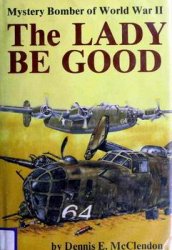The first truce came as a welcome respite for the hard-pressed Israeli forces, but above all it was most welcome in Jerusalem. When the truce began, no more than three days’ supply of food remained in the city. The United Nations organized convoys under Arab Legion inspection, which allowed a certain amount of supplies to move up into the city, but the ‘Burma Road’ bypassing Latrun was meanwhile improved and civilian supplies, military equipment and reinforcements moved along it freely and without inspection to the city.
Both sides succeeded in bypassing the limitations imposed on them by the truce and augmented their stocks of military equipment in addition to recouping their losses. King Abdullah undertook a tour of Arab capitals in an endeavour to consolidate his command and to achieve greater unity in the conduct of the war. In effect, what he was trying to obtain was Arab approval for him to annex the Arab parts of Palestine; not surprisingly, he was totally unsuccessful in his mission — even encountering a refusal on the part of King Farouk to his request that, as Supreme Commander, he should visit the headquarters of the Egyptian expeditionary force in Palestine. Farouk maintained that such a visit was out of the question as long as he. King Farouk, had not visited his own troops — a venture he considered too risky at the time. Thus, while the individual Arab armies regrouped, rested and re-equipped themselves, very little was achieved at the level of overall command.
Similar efforts were afoot in the Israel Defence Forces to reorganize and regroup. The Army was reorganized, and underwent intensive training as war materiel arriving from Europe (particularly from Czechoslovakia) was absorbed. Artillery units were being added, and a hodge-podge of tanks and armoured vehicles acquired from various countries throughout the world was gathered together in order to create the 8th Armoured Brigade. The Air Force, which was receiving aircraft, had already shot down some Egyptian Dakotas sent to bomb Tel Aviv, and had driven off an Egyptian naval force that had bombarded the city.
During the truce, an incident occurred that brought to a head the problems of indiscipline in the Israeli forces. David Ben-Gurion had viewed the possible appearance of private armies as the greatest danger that could threaten the stability of the emerging nation and, on 28 May, ‘Order No. 4’ promulgated by the Israeli Provisional Government had created a national army. This was to be known as the ‘Israel Defence Forces’ (IDF), and the law specifically prohibited the establishment or maintenance of any other force. But it was not put into effect without a struggle. During the first truce, the Irgun brought in a landing ship named Altalena, which had sailed from Europe with some 900 recruits aboard and loaded with arms and ammunition. Ben-Gurion ordered them to hand over the arms and ammunition to the Israel Defence Forces, which would assume responsibility for the new recruits. The result was an incident off Kfar Vitkin and a confrontation with units of the IDF: the ship sailed and ran aground on the beach in the centre of Tel Aviv; the Irgun refused to obey the instructions of the IDF units, and fighting broke out. Fifteen men were killed and Altalena was eventually sunk by gunfire. On 28 June, an oath of allegiance was taken by all of the armed forces, and the Irgun ceased to exist as a separate force.




 World History
World History









